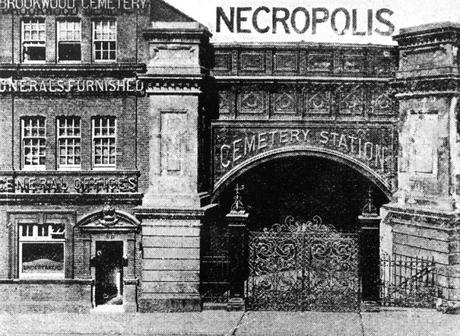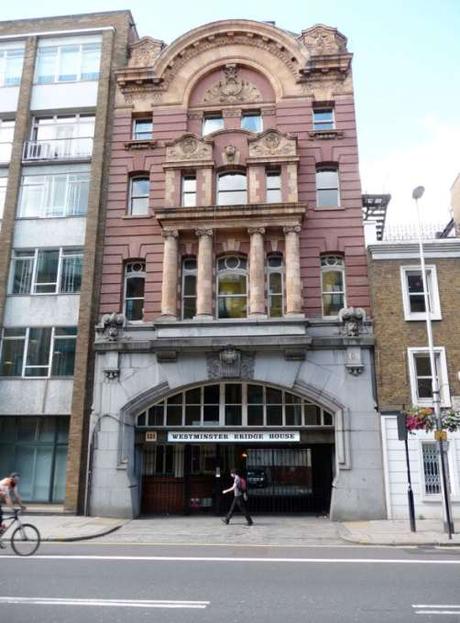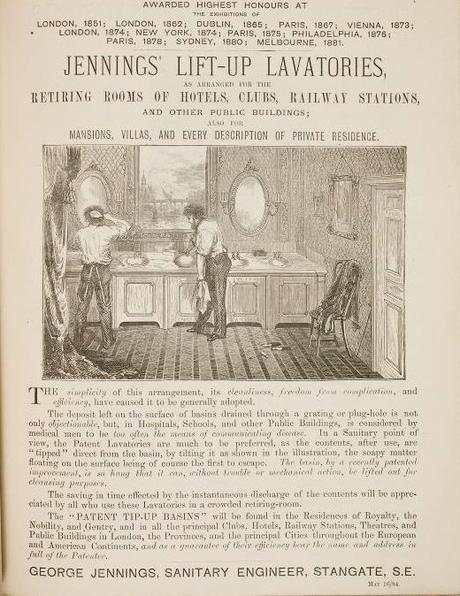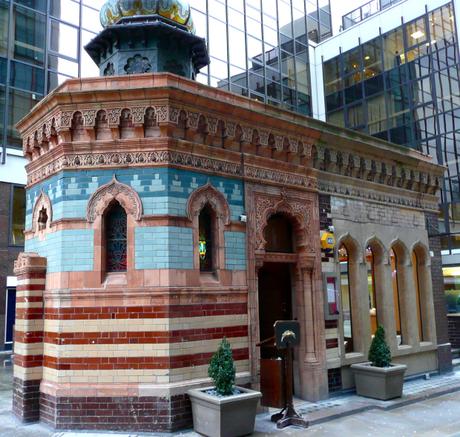While doing research for various topics during my MA degree, I’ve come across a number of interesting London sites of former Victorian curiosities that I never knew were there. Here are a few of my favourites:
The site of the London Necropolis Railway


This railway line was opened in 1854 by the London Necropolis Company to transport the dead and mourners between London and the newly opened Brookwood Cemetery in Surrey, still the largest in the UK. Unfortunately the cemetery never proved as popular as was hoped, perhaps in part thanks to the Magnificent Seven cemeteries built in a ring around London during the nineteenth century (of which Highgate is the most famous) proving much more convenient for Londoners, and after severe bomb damage during WWII, the station and railway were closed in the 1940s. The mourning culture of the nineteenth century is fascinating, particularly after the death of Prince Albert sent Queen Victoria into a deep mourning that set the trend for wider society’s excessively ritualistic approach to death. The fact that there was an entire railway line just to service the funeral industry is very telling of how important it was to Victorians to do death properly, and the vogue for cemeteries as places of leisure combined with memorial speaks to a sense of ease with and reverence of death that has long gone from our cultural norms. Nowadays the London Necropolis Company’s office building is still just about recognisable, near to Waterloo station on Waterloo Bridge Road, and is well worth a passing look.
Jay’s London General Mourning Warehouse

Further to the topic of mourning, one had to have a place to go to buy the myriad of clothing, accessories and paraphernalia required when a relative, friend, or even public figure, died, and Jay’s was, from the 1840s, the watchword in mourning for the fashionable. Jay’s provided everything that could possibly be needed inside its lavish warehouse that would eventually grow so large as to take up a whole block of Regent Street, then the most elegant and fashionable shopping street in London (which it largely still is today, though there are fancier enclaves – for those who aren’t natives, Oxford Street might be better known, but is much seedier, and has no high end shops). Jay’s had an army of staff on hand to travel to your home with a range of products to demonstrate and measure you for, as well as providing a very smart shop floor where the latest fashions in appropriate colours could be viewed, alongside jewellery, accessories and even mourning decorations for the home. Jay’s very much set the trend for mourning, and their fortunes flourished as the importance of maintaining the right appearance in the wake of a death became ever magnified in nineteenth century society. It is strange today to think that a mourning shop could take up such a prominent position in a street known for its fashion; nowadays the site – from what I can make out – is occupied by H&M and Banana Republic. How times change!
The Site of the First Ladies’ Public Toilet

The very first public toilets in London were created for the 1851 Great Exhibition. The Royal Society of Arts, who were responsible for the project, realised that this was a service London had been missing, and so set out to provide more toilets around the city that would function as places where people could both use the toilet and clean themselves up – tidy their hair, brush their clothes, clean their shoes, etc. These were in practice large rooms with attendants, similar to something you might find in a high end hotel nowadays. The first of these public conveniences was opened to women at 51 Bedford Street, just off the Strand, in 1852. This was – and still is – pretty much opposite the Royal Society of Arts,which was obviously a factor in the choice of location. The Strand, which Bedford Street comes off, was also a very busy street in the 1850s, as it is now. Though Charing Cross Station, the main hub of the Strand today, did not yet exist, Trafalgar Square, a big public draw, did, and the Strand was a main route through the city, merging into Pall Mall and Whitehall at one end, and Fleet Street at the other. What sorts of women would have used this facility? As it wasn’t free, it was unlikely to be working class women. Middle class women, going about their daily business, perhaps would have used it, especially as many had to take lengthy omnibus trips between their suburban homes and the city centre, though I also wonder whether it would have been frequented by prostitutes, who are known to have operated heavily in the area. I need to do some more research on the topic, but the consensus is that public toilet provision in the city went a long way towards opening up the city to women, who were barred from the pubs and clubs where most men would have been able to use the toilet, and so were restricted in their movements by the lack of provision for their biological needs. Many of us would argue the same today – there are never enough public toilets available for women! I have not managed to find an image of this toilet, and the building on the site now is later, but above is an image of what the public convenience may have looked like, from an image published in the 1880s.
Broadstreet Turkish Bath

This has to be one of the most incredible survivals of Victorian London; sandwiched between high rise glass office blocks in the City, sits this beautiful Turkish Bathhouse. A reminder of the vogue for such luxurious bathing facilities in the latter half of the century, its Moorish design speaks to the taste for all things Oriental and decadent during the fin de siècle. Much of the interior still survives, apparently, but the building is, as far as I can tell, currently closed, after having been converted into a nightclub in its most recent incarnation. I’d love to get a look inside – if anyone knows anything more about it, please do let me know!
